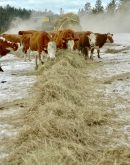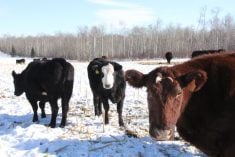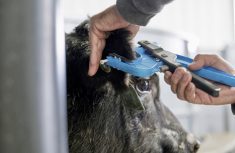After sifting through thousands of genes, researchers have flagged a handful of genes that seem to be related to feed efficiency in cattle.
Hui-Zeng Sun, a post-doctoral student at the University of Alberta, used functional genomics and computational statistics to better understand feed efficiency, writes Justin Dupuis on the U of A’s research blog, folio. There are 20,000 genes expressed in the rumen, liver, muscle and back fat, which are key to energy metabolism, but Sun narrowed it down to 19 genes linked to feed efficiency.
“This is laying the groundwork for us to use these genes when doing genomic selection for feed-efficient animals in cattle breeding programs,” says Sun, who was part of a team led by Dr. Le Luo Guan, a ruminant biologist and microbiologist at the University of Alberta.
Read Also

What to know before you go to Agribition 2025
If you’re attending Agribition 2025, this is the place to find out about tickets, dates and what’s happening this year.
Guan’s team is now conducting larger industry-based experiments to see whether animals known to have higher feed efficiency have those 19 genes. They also want to figure out how each gene flips off or on.
The research was funded by the former Alberta Livestock and Meat Agency, Alberta Agriculture and Forestry, and the Natural Sciences and Engineering Research Council of Canada. Sun and her colleagues have written a paper on the research, “Landscape of Multi-tissue Global Gene Expression Reveals the Regulatory Signatures of Feed Efficiency in Beef Cattle,” which was published in Bioinformatics.
















